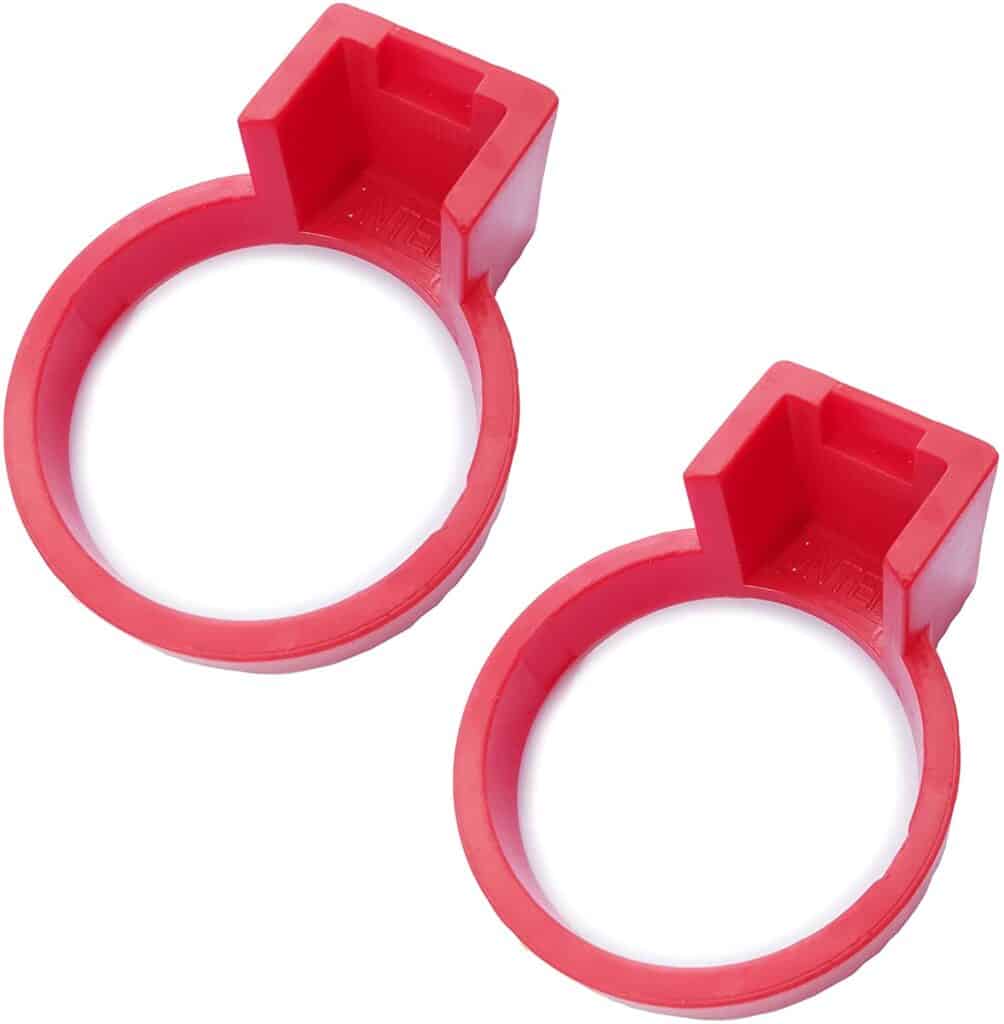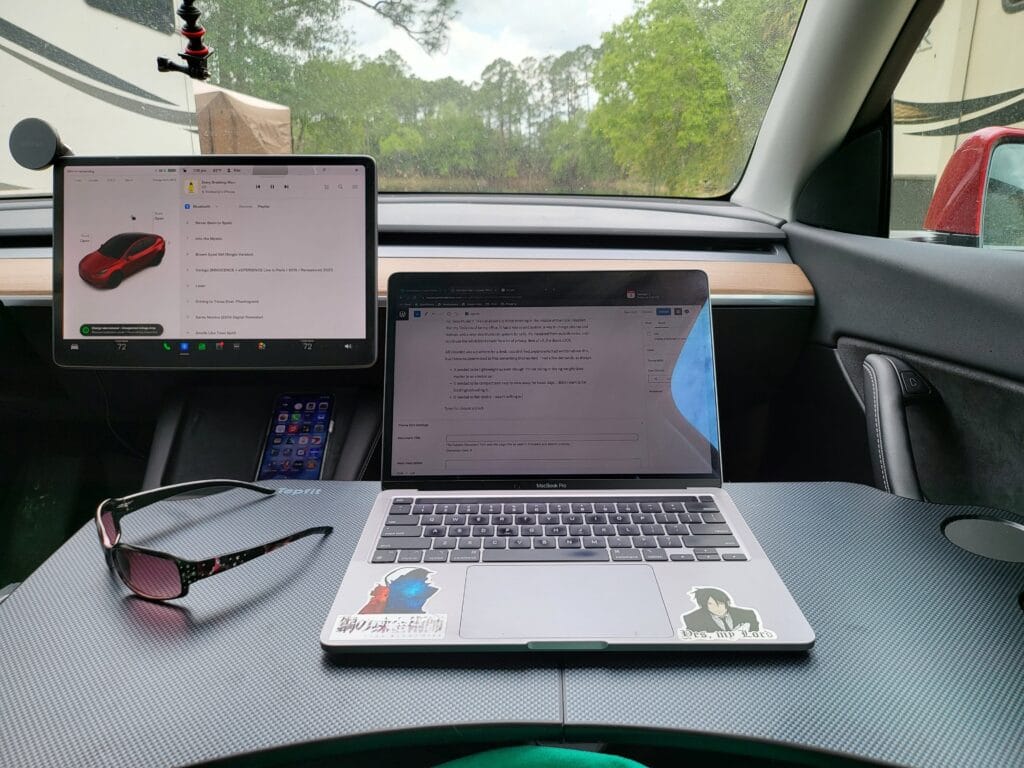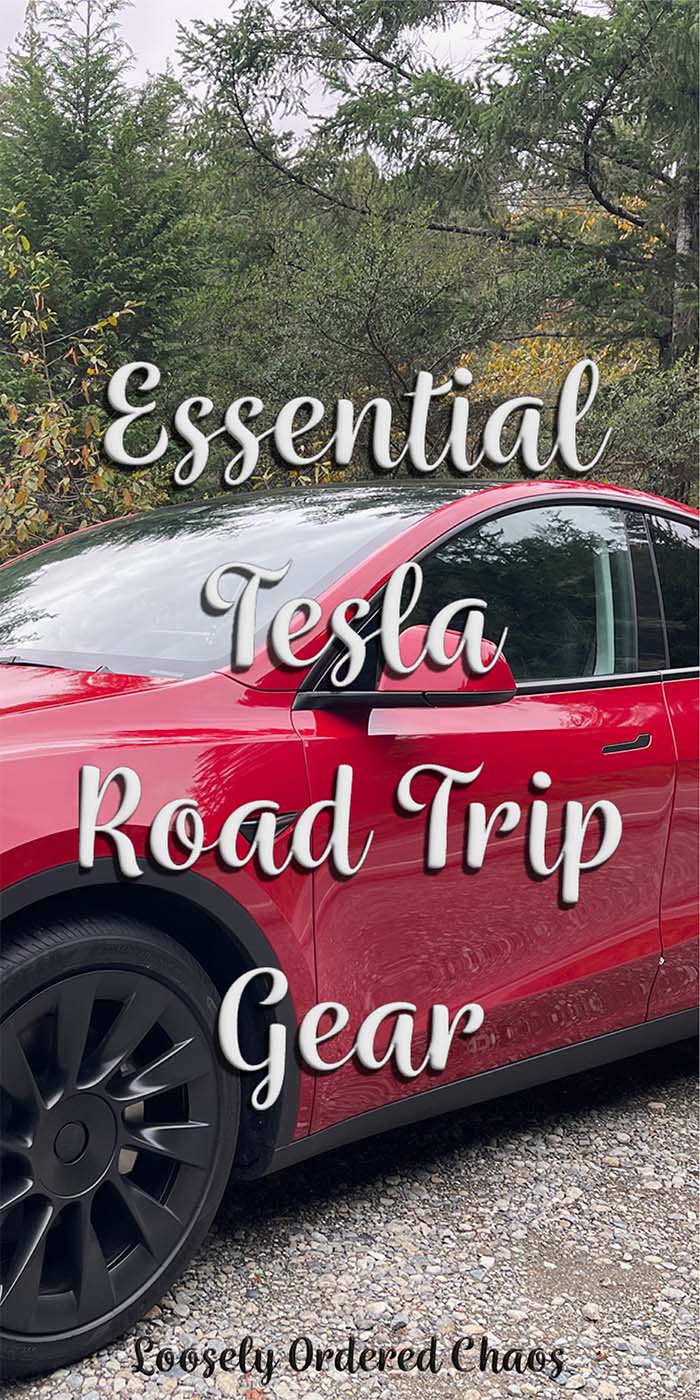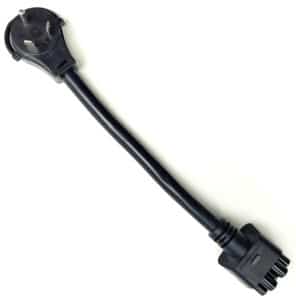There is no doubt that Teslas make road trips more fun, more relaxing, and cheaper to boot. There is a lot of confusion about what you need to be prepared on a long road trip. Having put 8,000 miles on my Model Y in 2 1/2 months on what is essentially an extended road trip, I have an idea of what Tesla road trip gear makes for a painless trip.
Tesla Road Trip Gear: The Necessities
The Tesla Supercharger network is phenomenal, but there will be times when you find yourself in a gap, especially out west. Maybe you decided to take a scenic byway or maybe you skipped a charger you shouldn’t have, but eventually you’ll need to charge outside of Tesla’s system. If you are camping in RV parks, you can charge for no additional cost as well. The first 3 items come with the car.
- Mobile Connector (no longer included if you ordered after 4/17/2022 but highly recommended). If you have to buy it, it now comes with the 5-15 and 14-50 adapters.
- 5-15 (household 110v) adapter for Mobile Connector. When nothing else is available, this will get you something. If the Mobile Connector came with your car, this is likely the adapter it came with.
- High quality 110v extension cord. Sometimes you’ll be really far from the only available outlet for your car. You need something that will handle the load.
- NEMA 14-50 adapter for Mobile Connector. This will allow you to charge from 50-amp RV pedestals. The Mobile Connector is limited to 32 amps, but this is the fastest charging you’ll find in an RV park.
- RV extension cord for NEMA 14-50. If you tow a 30-amp camper but still need to charge your car, sometimes the mobile connector just won’t reach. This will do the job safely. Not necessary if you’re car camping exclusively.
- SAE J1772 adapter. For those times when you need to connect outside of the Tesla Supercharger network. Lots of slower chargers in parking lots and garages use this connector. This adapter still comes with the car.
- Charger lock ring for J1772 adapter. This prevents people from unplugging you when using the J1772 adapter. What generally happens is that people will leave the adapter in the car since the charge port is locked and disconnect the charger from the adapter. This locks the adapter to the charge cable, which prevents people from unplugging your car. Yes, there are people this petty.

- TT-30 adapter for Mobile Connector from EVSE Adapters. Not all parks are 50 amp equipped. Many are in the process of upgrading and are only partially 50 amp. You’ll need this adapter to properly hook up to the pedestal. The 30-amp adapter Tesla sells is for 220v; the TT-30 is a 120-volt plug. Some say they’re interchangeable, but the car is an expensive thing to gamble with so I strongly suggest you use the proper adapter.
- Air compressor. You’d be amazed at how far you can limp a tire if you can add air. This is an absolute non negotiable. I have the AirMan ResQ Pro+ in mine, but any decent quality compressor will do. Just know that if you use the sealant and still have tires with foam on your tire, you’re going to need a new tire. Depending on the situation, this may not be a negative but it’s worth knowing ahead of time.
Charging Equipment I Do Not Have (and may or may not want)
- Tesla CCS Adapter:
You can now import the Tesla CCS adapter from South Korea from harum.io.It will only work if your car is CCS enabled, so be sure to check that on the software page under “additional vehicle support”. Rumor has it that there will be a retrofit available for cars without CCS support once Tesla released the North American version of the adapter. I used to wonder if I was going to bother, but I’ve decided I will get it as soon as possible for more options in remote areas. - There is an aftermarket CCS adapter out there for Tesla that will allow you to charge at non-Tesla charge stations, but I don’t recommend it. They’re always one step ahead of Tesla shutting them down, so you never know when you pull up to charge whether you will be able to charge. That sort of uncertainty is unacceptable to me given how expensive they are and that Tesla is bringing their own CCS adapter to market sometime this year. The company is Lectron if you’re wanting to take the risk.
What Do I Carry?
I live on the road in my car and am a fulltime RVer, so this is what I carry in my car:
- Mobile Connector with household 110, TT-30, and 14-50 adapters.
- High-quality 3-prong household extension cord.
- J1772 adapter and locking ring.
- Portable air compressor.
That’s it. I have other toys that are part of the RV’s kit, but with these few items I’ve never been stranded. A few weeks ago I arrived at a supercharger in Florida with 4% remaining after boondocking and kayaking, but I’ve never had to do the tow of shame.
Creature Comforts
The Desk
Being a blogger and the owner of a mobile RV repair business, making the most of my time is super important. Whether I’m at a supercharger or using my Tesla as a mobile office at the RV park or national park, the Newellev Tesla Model Y Foldable Laptop Working Desk is a constant companion. If you’re interested in learning more about my mobile office setup, I’ll have a post up about it soon.

The Mattress
Camping Mattress for Tesla Model Y/3/X, YONZEE Memory Foam Car Mattress is what I chose for car camping and I don’t mind it. It isn’t the most comfortable thing out there, frankly, but it’s good enough for camping and it’s not an air mattress. Double bonus points for fitting in the sub trunk.
The fit for my 7 seater is a little strange, but nothing’s really built for the 7 seater Model Y anyway. The sheet is some sort of inexpensive microfiber, and it all comes together quickly. I am usually 100% about comfort with mattresses, but I don’t spend a whole lot of time car camping since we have the RV, so it does what I need it to do. It’s a solid choice for occasional camping; if I were car camping full time, I’d invest a bit more.

Privacy Screens
I haven’t found privacy screens I like for the Model Y yet. I did buy some BASENOR on the advice of another Tesla camper, but the screens weren’t tall enough. Perhaps they were for the 3 but mislabeled for the Y. I’m awaiting an exchange in the hopes that this is the mistake that was made as I really liked the build quality of the screens and their opacity. I will update when I receive the replacements.
The Controversial Tesla Road Trip Gear
If you’re going to be charging in RV parks frequently, I consider having a good surge/EMS a requirement. Even in the newest or most recently upgraded campgrounds electrical problems abound. I choose not to risk a $75,000 car over the price of a surge/EMS. If you have experience with a volt meter, you can use that instead. Progressive and Southwire are solid brands.
I know some make the argument that the Mobile Connector has all the fancy circuitry in it so there’s no need to duplicate the effort with an EMS. It’s not that I don’t trust it so much as the fact that they’re always out of stock and I don’t want to risk damaging it, especially on a road trip. Common issues in campgrounds are reverse polarity, loose wires, low voltage, and surges. Some issues are riskier than others, but I have experienced them all. They are not rare by any means. My husband is an RV tech and we see this far too often to not warn you about the risks.
When I’m with my RV, I don’t need it. We have a hardwired EMS for both the 50 main circuit and the 30-amp “moochdock” circuit. Within a few minutes of pulling in, we know if the circuit is trustworthy. Neither EMS will allow power to the RV without it checking out. Once it checks out, we know it’s safe for the Tesla, too.
Conclusion
Some things are absolute necessities, some things are niceties, and some are a personal call. No matter what decisions you make as to your Tesla road trip gear, hopefully this has given you food for thought in choosing your essentials.
Related Links

